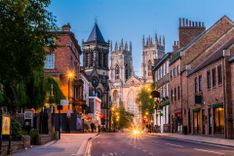6. Wander through Oxford’s college quads and historic streets
Oxford lives up to the hype. With its golden-stone colleges, cobbled alleys, and academic traditions that stretch back nearly 1,000 years, it's one of those things to do in England that delivers.
Yes, the university dominates the city, physically, culturally, even spiritually, but there’s more to Oxford than scholars in gowns. Explore inside colleges like Magdalen, Christ Church, or New College for a hit of architectural drama, then dive into the Ashmolean Museum or the Museum of Natural History for something less cloistered.
The city’s industrial past still rumbles in the background, especially in Cowley, where Britain’s first mass-produced cars rolled off the line in the 1920s. These days, Cowley’s more about street food and indie shops than factory floors.
To cap off your visit, squeeze in a few Oxford pubs, some are centuries old and come with literary backstories or Tolkien connections, while others just serve a good pint in a quiet courtyard.
How to get to Oxford
- Trains run regularly from London Paddington (about 1 hour).
- Buses are frequent too, including the Oxford Tube from London Victoria.
- The city center is walkable, and cycling is popular, but keep an eye out for cobbles.
When to visit Oxford
- Spring and autumn are great for college gardens and fewer tour groups.
- Summer gets busy, especially with international students and language schools.
- Some colleges close during exam season, so check access in May and June.


























